Animals
New Terrifying Deep-Sea Creatures Discovered That Are So Black They Absorb Virtually All Light
These deep-sea creatures that have developed such ultra black skin that it is being compared to a natural
Vantablack. “It’s like looking at a black hole.”
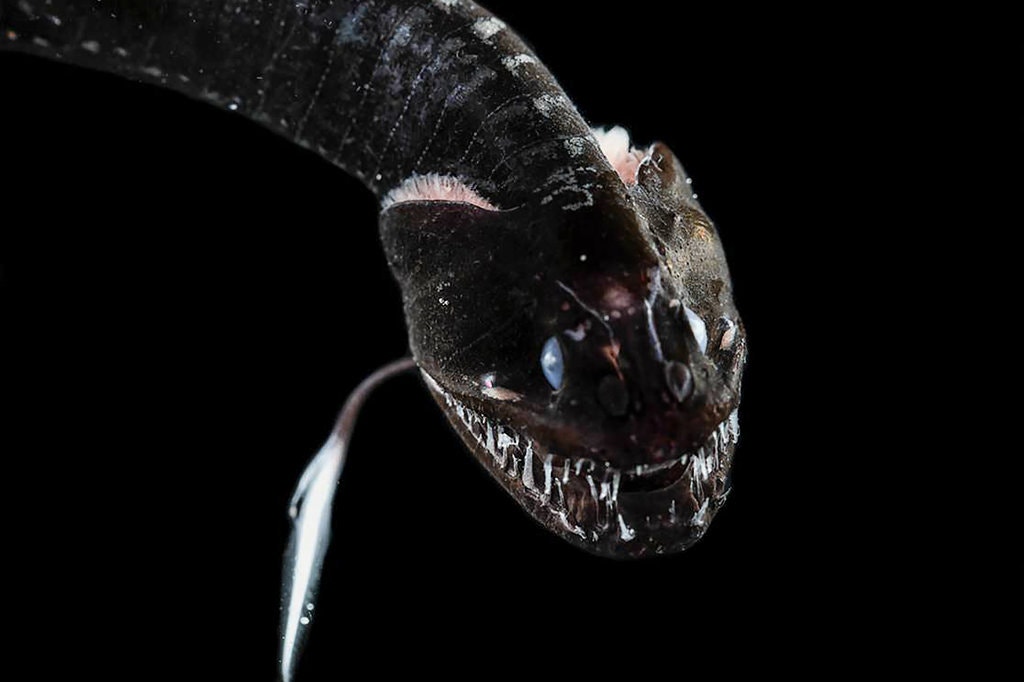
(TMU) – Marine biologists recently discovered 16 new species of deep-sea creatures that have developed such ultra-black skin that it is being compared to a natural “Vantablack,” which is a human-manufactured material that absorbs virtually all light. The ‘fangtooth’ and its friends, who live as much as 2,000 meters beneath the water, do not appear to have passed along this trait to any of their evolutionary descendants, making it even more miraculous of a find.
Discovered by marine biologists Karen Osborn and Alexander Davis, these deep-sea fishes, some of which (the fangtooth, for instance) look like monsters right out of a science-fiction story, contain skin full of organelles known as melanosomes, which absorbs most light photons.
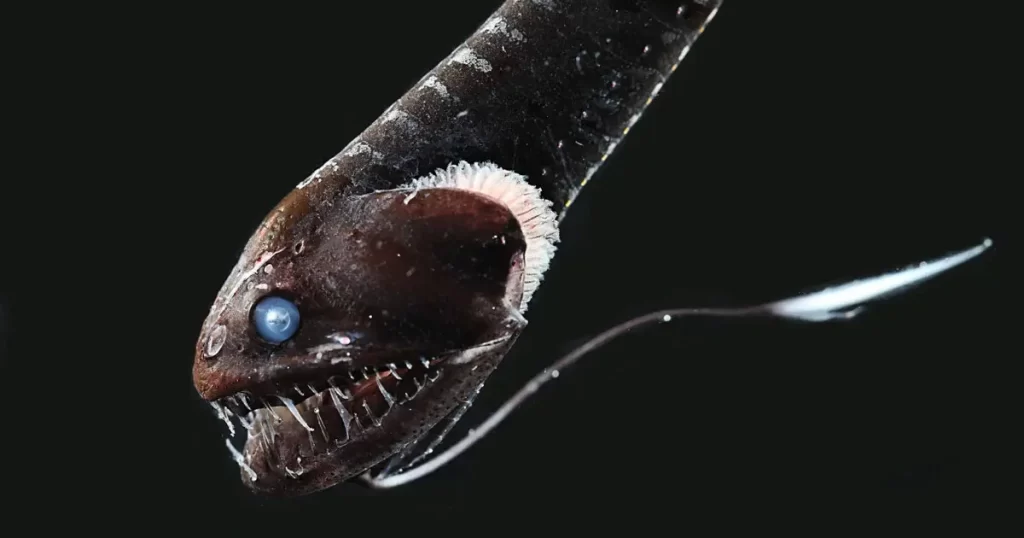
“What isn’t absorbed side-scatters into the layer, and it’s absorbed by the neighboring pigments that are all packed right up close to it,” Osborn observes. “And so what they’ve done is create this super-efficient, very-little-material system where they can basically build a light trap with just the pigment particles and nothing else.”
The effect, she says, is that when she tried to photograph the ultra-black fish, its skin absorbed 99.956 percent of the two strobe lights she used for illumination. All she was able to capture were the eerie outlines.
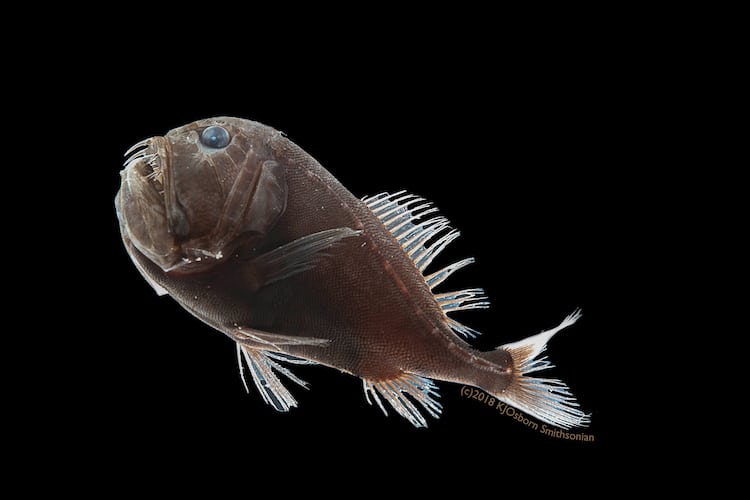
Anoplogaster cornuta
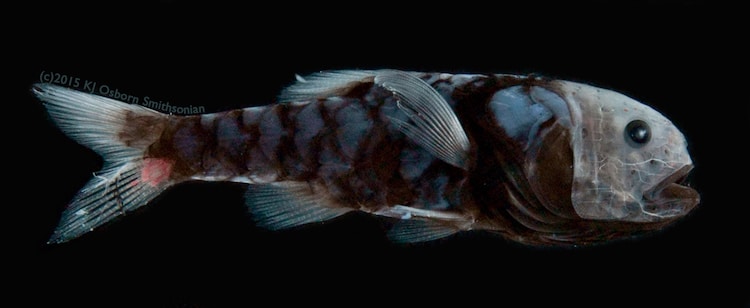
Ultra-black ridgehead (Poromitra crassiceps)
“We had no idea there were any fishes at all that were ultra-black,” Alexander Davis, lead author on a new paper in Current Biology, explained. “As far as we knew, the only vertebrates that were ultra-black were these birds-of-paradise and a couple other bird species. It was the first case we have of something this black really being used as camouflage as well.”
Scientists believe that although the deepest regions of the sea are extremely dark, the marine life still produces a universe full of glowing bioluminescence, which is utilized in a wide range of ways by different creatures – by prey trying to discombobulate their predators, by predators searching for their next meal, and by fish looking for mates.
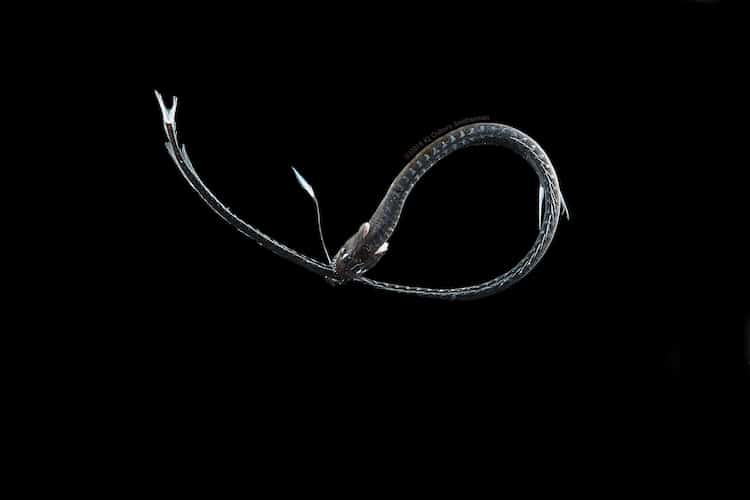
Pacific blackdragon (Idiacanthus antrostomus)
However, these fish must still conceal their bodies.
“Obviously, you don’t want your prey to see that light casting all over your face,” says Davis. “So if your head is now ultra-black, none of that light goes back to the prey, and you’re more likely to get within range.”
Additionally, some of the fish developed ultra-black stomach linings to further conceal their location while eating.
“[The prey is] either going to be startled and bioluminescent when it’s in your belly because it’s freaking out, or as you digest it, those chemicals are going to release and start bioluminescing,” says Osborn. “You don’t want to be swimming around with a glowing belly, right? That’s just asking for trouble.”
The development of deep-sea melanosomes that both are the pigment as well as the biological structure absorbing the light creates a highly efficient system, marine biologists say. While they don’t know yet whether such a phenomenon could be reproduced in a lab, it’s not off the table that such a physical mechanism could someday be commercialized.
Typos, corrections and/or news tips? Email us at Contact@TheMindUnleashed.com
